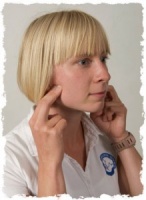
Q: What articulation developmental norms do you use? I don’t use any specific developmental norms because of the following: Lieberman (1980) found that a rudimentary vowel quadrilateral is set in infant vocal productions by 5 months of age. According to a recent chapter by Vihman (2004), research demonstrates that average children acquire basically all the consonant phonemes by 3 years of age. All studies that have been done since Templin in 1957 have demonstrated that all the consonants reach adult…









